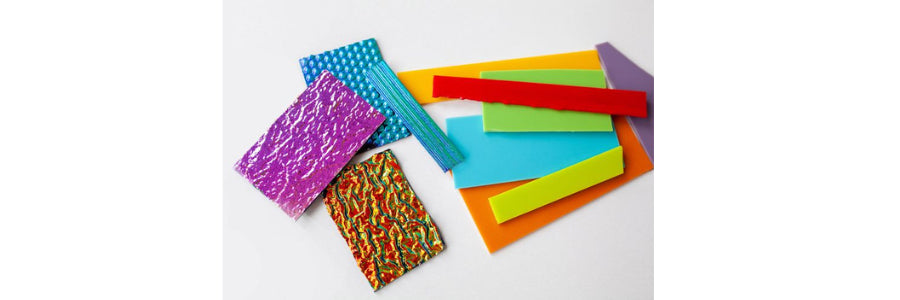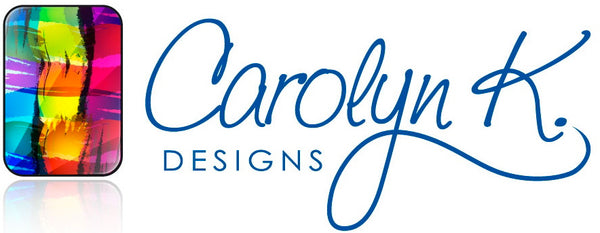
A Playful Tour of the Forms of Glass
Share
Hi glass lovers! Let’s talk about the many forms of glass I use to make my jewelry and giftware. With the ton of choices, it’s like being a kid in a candy store!
So first things first! When I’m working with glass, I need to make sure they play nice with each other! I check this thing called COE (or coefficient of expansion) of the glass. It’s all about how much the glass likes to stretch and shrink when heating and cooling in the kiln. If the COEs don’t match, it’s a recipe for disaster and the glass is unlikely to survive the firing in one piece. To make my life easy, I stick to one COE, and I go with the COE 90 gang! But I like to play with the temperature I heat the glass to, creating either a full fuse (where the glass fully melts together) or a tack fuse (where the glass retains some texture and shape).
Now let’s get to the fun stuff!
Sheet Glass: Sheet glass is the superstar here. It comes in all sorts of colors, patterns, textures, opacities and even thicknesses. And guess what? Some colors will create reactions when layered with other colors. Those reactions are often used intentionally in the design process. Others that are translucent, create new colors when put on top of another color. See what happens to the green and yellow when topped by this translucent blue!

Frit: Frit is like a ninja that enhances glass designs. Frit is crushed glass in granular form, available in different sizes from larger chunks to fine powder. This picture shows coarse, medium, and fine frit. I use frit to add texture, depth, and shading to my pieces, particularly my giftware. I may sprinkle it over the base glass or arrange it in specific patterns to create unique effects. I will also use frit in molds to create various jewelry designs. It’s like adding spices to a dish!

Stringers and Noodles: Stringers and noodles are thin, elongated pieces of glass. Stringers are the shape of spaghetti and noodles the shape of fettuccini. I use stringers and noodles to create fine lines, intricate patterns, and delicate details. I even play around and make my own “twizzles” by bending the molten glass into swirls. It’s like making the glass dance!

Confetti and Murrini: Confetti and murrini are party animals. Confetti is like fun irregularly shaped thin pieces of glass, while murrini is small glass rods with intricate patterns inside. Murrini is also sometimes called millefiori, or a thousand flowers in Italian. I use murrini to add pizzazz to my jewelry or as stand-alone jewelry pieces! I don't have confetti to show you, but the rods here are murrini which turn into the slices you see here (okay, it's from different murine but I hope you get the idea!).

Dichroic Glass: Dichroic glass is the glitzy diva of the glass world and what I spend most of my time working with. It’s like a chameleon, changing colors as it moves. It’s super sparkly and showcases different hues depending on the angle and lighting. And, before it is fired, it’s colorful thin coating can be removed by scratching or etching, to create many of the patterns you see. It typically comes with a base of either clear glass or black glass and comes in a variety of textures.

Glass Paints and Enamels: These babies can be used in amazing ways. I use glass paints, particularly in my fused glass ornaments, to create elements. Real painters (not me!) can use them to make amazing designs. The best part is that they play nice with all types of glass. You don’t need to worry about COE here.

The best part is that I get to play with all of these elements and mix and match them to create mind-blowing art. The possibilities are limitless, allowing for endless creativity. Each type of glass offers its own charm, allowing me to create unique and visually captivating pieces. I wish you could come to my studio to see these in person!
